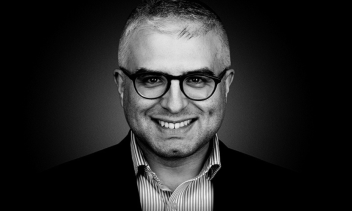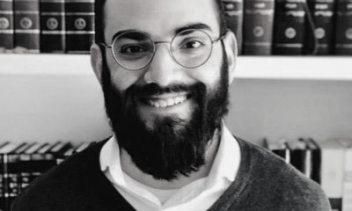There are many doorways to mysticism. The great Rabbi Shlomo Freifeld once made the following observation: “These days, you meet some young people – they are so old, so old… And you meet some elderly people who are so young.” Some come to mysticism when they feel old enough, wise in their years, and others when they feel young enough. This month, 18Forty is thinking about mysticism, and the paths that lead there.
We live in a fragmented age – what has been called the age of anxiety, or sometimes the cynicism age. The question of poet John O’Donahue speaks to us all: “What have you done with your wildness?” What have we done with our sense of wonder, our sense of wildness? Many of us look at children with appreciation for the joy and abandon with which they live, the simple wonder they find in the world. But what has become of our own inner children?
Picasso once said that it was easy for him to paint like Rafael, the great painter, but it took him a lifetime to paint like a child. Looking at life, we can choose to look at the seen and unseen with the wonder of children, decidedly with our own eyes. This is one lens that mysticism provides to us – a new way of looking at the world, full of wonder.
Some people come to this lens and language seeking wonder, but others come to make sense of a world without wonder. Gershon Scholem, the groundbreaking scholar of mysticism and Kabbalah, would tell students that “to comprehend the Kabbala you have to study Kafka, particularly The Trial.” The world of Kafka is a world without redemption, or possibly the understanding that redemption lies within the impossibility of redemption. In Scholem’s words, “Here for once a world is expressed in which redemption cannot be anticipated – go and explain this to the goyim!” As a doorway into Jewish mysticism, Kafka is not the door of wonder, but the door present when wonder is lost.
In thinking about the mundane and the mystical, G.K. Chesterton, a true master of words, said this:
Because children have abounding vitality, because they are in spirit fierce and free, therefore they want things repeated and unchanged. They always say, “Do it again”; and the grown-up person does it again until he is nearly dead. For grown-up people are not strong enough to exult in monotony. But perhaps God is strong enough to exult in monotony. It is possible that God says every morning, “Do it again” to the sun; and every evening, “Do it again” to the moon. It may not be automatic necessity that makes all daisies alike; it may be that God makes every daisy separately, but has never got tired of making them. It may be that He has the eternal appetite of infancy…
God, with the eternal appetite of infancy… This is the life of wonder. Whichever way you come to mysticism, join us in appreciating the wisdom that the world of mysticism has to offer. Whether you look with wonder or without, we hope to provide a window into the mystical. French philosopher Gaston Bachelard gives us hope as we seek wonder and wisdom in a complicated world when he says: “So, like a forgotten fire, a childhood can always flare up again within us.” And so may it.
Wonder Post-Wonder
Never once in my life did I ask God for success or wisdom or power or fame. I asked for wonder, and He gave it to me. (Abraham Joshua Heschel)
In the late 15th century, Japanese shogun Ashikaga Yoshimasa (1436-1490), 8th shogun of the Ashikaga shogunate, sent a damaged bowl for repairs. When the bowl was returned, it was mended but ugly and stapled, motivating local craftsmen to try their hand at more elegant styles of repairing broken objects. And so kintsugi was born. Kintsugi, literally “golden joinery,” is the Japanese art of repairing broken ceramics with a resin developed to look like solid gold (and often using real gold).
Through kintsugi, cracks and breakages do not spell the end of a pot or bowl, rather they set the way for a deeper adornment. As the Jewish bard Leonard Cohen murmured in his epic song “Anthem”:
Forget your perfect offering
There is a crack in everything (there is a crack in everything)
That’s how the light gets in
The kintsugi method treats this literally, as cracks birth golden rivers streaming through the broken ceramic. Brokenness is no longer hidden or thrown away; instead, the possibilities and power hidden in the cracks shine in full relief. This is a matter of design – kintsugi is related to the broader Japanese value of wabi sabi, a world view that emphasizes the impermanence and imperfection that comprise the state of reality. Adorning the very imperfections of this world with gold is a subtle yet powerful choice to live with greater beauty, in spite of it all.
In the twentieth century, our world cracked. Like a simple clay pot, fallen and in pieces, the world shattered. Systems of truth and power, ethics, art, and culture could not stop the atrocities of the 20th century. For many, this was the age of the death of men, with the death toll rising ever higher and higher. Others insisted the world lost even more than the catastrophic loss of life. In the words of Elie Wiesel, “In Auschwitz died, not only man, but also the idea of man.”
An innocence was lost in the 20th century. Facing the catastrophe, humanity now knew uncomfortable truths about what both man and God could do. The act of faith, and particularly the wonder of mysticism, are in many ways built upon a foundation of the kind of innocence now lost.
Where can a people go, a person go, a world go, after the death of innocence? Enter second innocence. Second innocence, or second naivete, is a position that affirms innocence in the face of all the challenges to innocence. Second innocence is the affirmation of innocence, of truth, of beauty, in the aftermath of a broken world. This is the decision to live a life of wonder, even though one knows all the ways that the world may not be filled with wonder.
Why does modernity need mysticism? It is no small coincidence that some of the greatest breakthroughs in the history of Jewish mysticism have occurred in the immediate aftermath of catastrophe. In the wake of the expulsion of Jews from Spain in 1492, suffering the consequences of the inquisition, the Arizal and a group of his friends, teachers, and students in Safed led an intellectual revolution that profoundly shaped the future of Jewish thought.
In the aftershock of catastrophe, perhaps mysticism is most needed. The mystical impulse is not easily defined, as there are many qualities and aspects to mysticism. Even Jewish mysticism has been practiced and studied in many different matrices. But we can turn to the wealth of words and ideas within the many mystical texts of the Jewish people to find wisdom and wonder in the modern era. We can look to our mystical thinkers to better appreciate the unseen aspects in a world in which everything is seen, everything is visible.
Rabbi Louis Jacobs invoked the words of English poet Elizabeth Barret Browning when exploring the mystical impulse. Her words offer a window into what we might hope to see:
Earth’s crammed with heaven,
And every common bush afire with God;
But only he who sees, takes off his shoes,
The rest sit round it and pluck blackberries,
And daub their natural faces unaware
More and more from the first similitude.
In the past century – and in the past year – we have seen the world aflame. Perhaps it is time to look with wonder at the fire. It is not for nothing that as the world has aged, the mystical tradition has opened up. Texts and philosophies that were once secret, obscure, and impenetrable – esoterica studied only by the most righteous – have been opened up to contemporary readers. Perhaps the rarefied thought of Jewish mysticism has opened up in the modern era – from 1840 until today – specifically to address the needs of our disenchanted world. In a world lacking adornment, in which every crack is seen, we can turn to mysticism to remember that there is something more, under the surface of ourselves, our world, and our religion.








